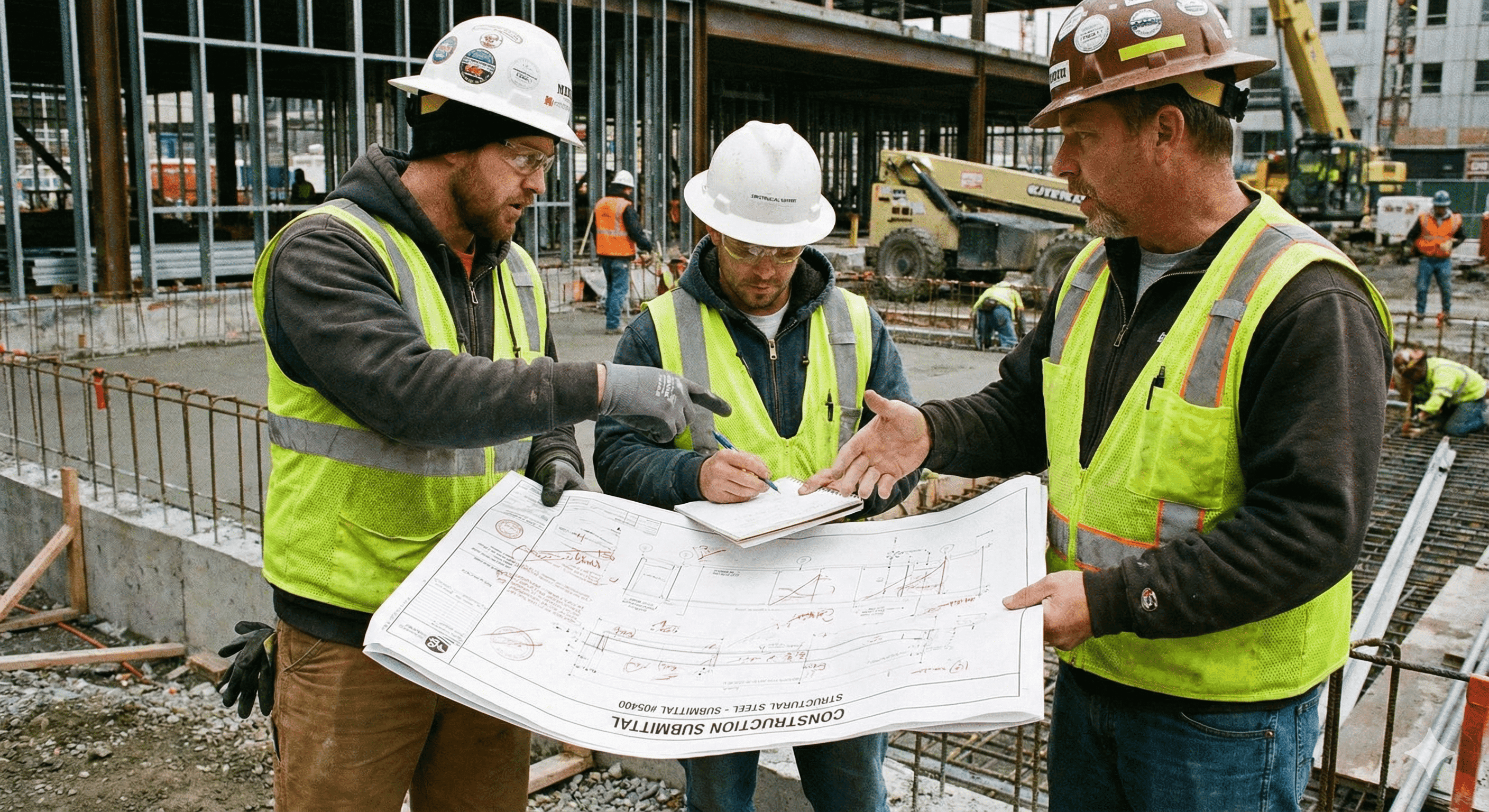Industry Insights
/
Jun 4, 2025
The True Cost of a Rejected Submittal: $805 Each.
Our survey of 6,000+ construction professionals revealed each rejected submittal costs $805—here's how we calculated that number.
Tom Port founder BuildSync
How BuildSync calculated the hidden costs of submittal rejections—and why this number matters for your project margins
Nearly every General Contractor and Subcontractor we speak to faces the same costly bottleneck: 30–40% of their submittals are rejected on the first pass.
If you're in construction, this statistic probably doesn't surprise you. What might surprise you is the actual dollar amount each rejection costs your project.
At BuildSync, we always suspected these rejections were more than just a minor inconvenience; they were eating into project margins. And with margins as tight as they've ever been, each dollar on a project must be accounted for. But in the early days, we didn't know by how much.
So, we set out to answer one critical question: What does a single rejected submittal actually cost a project?
The Research Behind the Number
To find out, we connected with over 6,000 construction professionals and ran a comprehensive survey with more than 200 of them. We asked about rejection rates, the downstream effects of those rejections, and the cost implications across different project types and company sizes.
Our survey included:
General contractors ranging from $50M to $2B+ in annual revenue
Subcontractors across MEP, structural, and finish trades
Operations Managers, project managers and engineers
Projects spanning commercial, healthcare, education, and industrial sectors
From this data, we were able to build a clear understanding of the dollar amount associated with each rejection. The results were eye-opening.
Breaking Down the $805 Average Cost
Here's what we uncovered about the real impact of submittal rejections:
25% of rejections have little to no impact
These are typically submitted early in the process and may need some revisions, but ultimately the delay causes no downstream issues. The cost here is minimal, mainly the administrative time to resubmit. But let’s play it conservatively and say there’s no cost.
Cost impact: ~$0.00 per rejection
65% of rejections cause operational friction
This is where the real costs start to add up. Project Managers, Superintendents, Foremen, and Engineers are pulled into conversations to resolve issues. Time is spent:
Reviewing the rejection reasons
Rescheduling delivery dates
Updating project timelines
Managing stakeholder communications
Cost impact: ~$500 per rejection in lost time and productivity
9% become more critical issues
These rejections can lead to project delays, field rework, or detailing changes. They might require:
Design team involvement for clarifications
Additional equipment or labor mobilization
Schedule compression costs
Expedited shipping for replacement materials
Cost impact: ~$2,000 per rejection
1% of rejections result in significant project delays
The most severe cases can delay substantial completion and potentially trigger liquidated damages. While these are the most difficult to measure precisely, our respondents helped us estimate costs that include:
Liquidated damages
Cascade effects on subsequent trades
Client relationship impacts
Cost impact: ~$30,000 per occurrence
The Math: How We Calculated $805
Using these averages and their frequency, the weighted average cost per rejected submittal breaks down to:
25% × $0.00 = $0.00
65% × $500 = $325.00
9% × $2,000 = $180.00
1% × $30,000 = $300.00
Total average cost per rejected submittal: $805.00
The Bigger Picture: Annual Impact
For a company processing 2,000 submittals annually with a 30% rejection rate (which is on the low end in our experience), that equates to:
2,000 submittals × 30% rejection rate × $805 = $483,000 wasted on poor submittal reviews each year
This doesn't even account for the opportunity costs—the projects you might have won with better margins, or the growth investments you could have made with those recovered dollars.
Why This Matters Beyond the Numbers
While the financial impact is significant, the hidden costs go deeper:
Client Relationships: Frequent rejections can strain relationships with owners and architects, potentially affecting future project opportunities.
Team Morale: Project teams dealing with constant submittal issues experience higher stress and lower job satisfaction.
Competitive Positioning: Companies with smoother submittal processes can offer more competitive pricing and faster delivery times.
Cash Flow: Delayed approvals mean delayed deliveries, which can create cash flow challenges throughout the project lifecycle.
How BuildSync Changes the Equation
Understanding these costs drove us to build a solution that addresses the root causes of submittal rejections. While BuildSync won't prevent all rejections, some are unavoidable due to design changes or legitimate non-compliance issue our clients experience a submittal rejection rate of less than 5%.
For that same company processing 2,000 submittals annually:
Traditional approach: 600 rejections × $805 = $483,000 in rejection costs
With BuildSync: 100 rejections × $805 = $80,500 in rejection costs
Annual savings: $402,500
This dramatic reduction comes from:
Submittal compliance verification against project plans and specifications
Consistent review standards that catch issues before submission
Clear documentation of compliance checking for faster approvals
Integration capabilities that streamline the entire workflow
Calculate Your Own Submittal Costs
Every construction company's situation is different. That's why we built an interactive calculator on our homepage that lets you input your specific numbers:
How many submittals do you process annually?
What's your current rejection rate?
The calculator uses our research-backed methodology to show your potential annual losses—and more importantly, your potential savings with improved submittal processes.
The Bottom Line
Submittal rejections aren't just administrative hassles; they're material threats to project profitability. At an average cost of $805 per rejection, even modest improvements to your submittal process can deliver substantial returns.
The question isn't whether you can afford to improve your submittal process. The question is whether you can afford not to.
Ready to see how much submittal rejections are costing your projects? Try our calculator at buildsync.ai and discover your potential savings.
BuildSync automates submittal review, comparing them against plans and specifications, helping construction teams reduce rejection rates from industry averages of 30-40% to less than 5%. Learn more about our AI-powered platform at buildsync.ai.
Related reads for you
Discover more articles that align with your interests and keep exploring.




